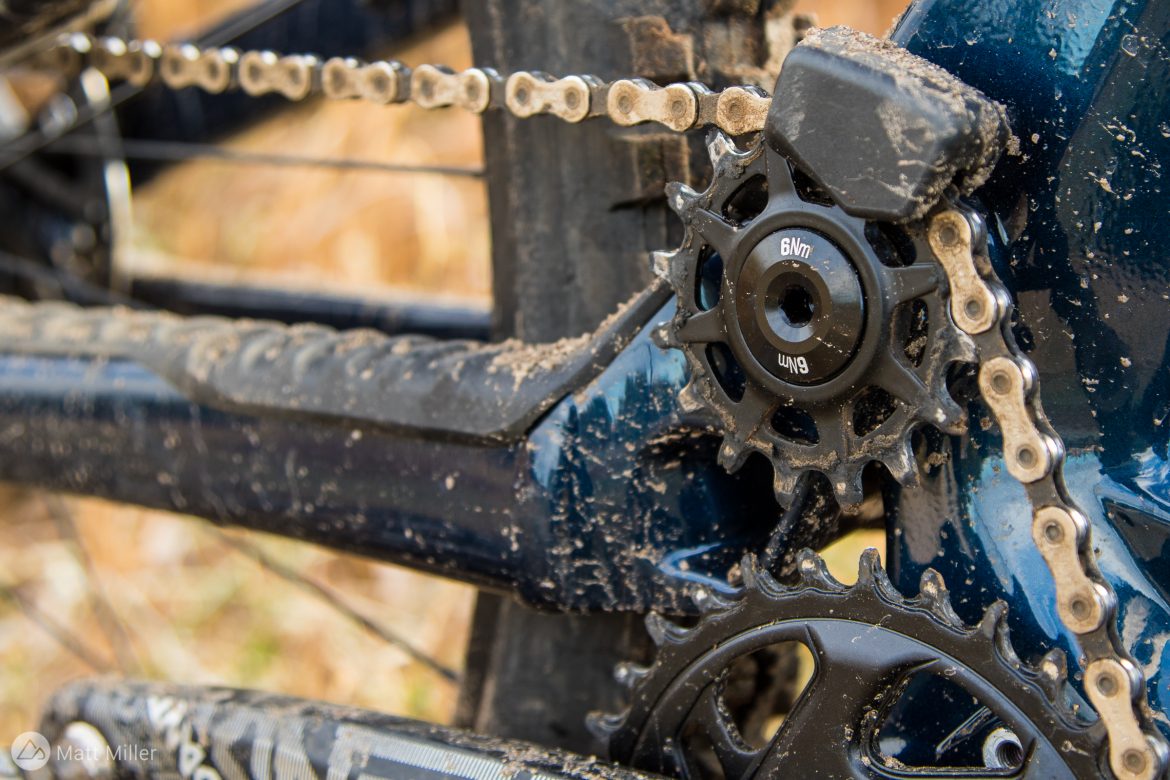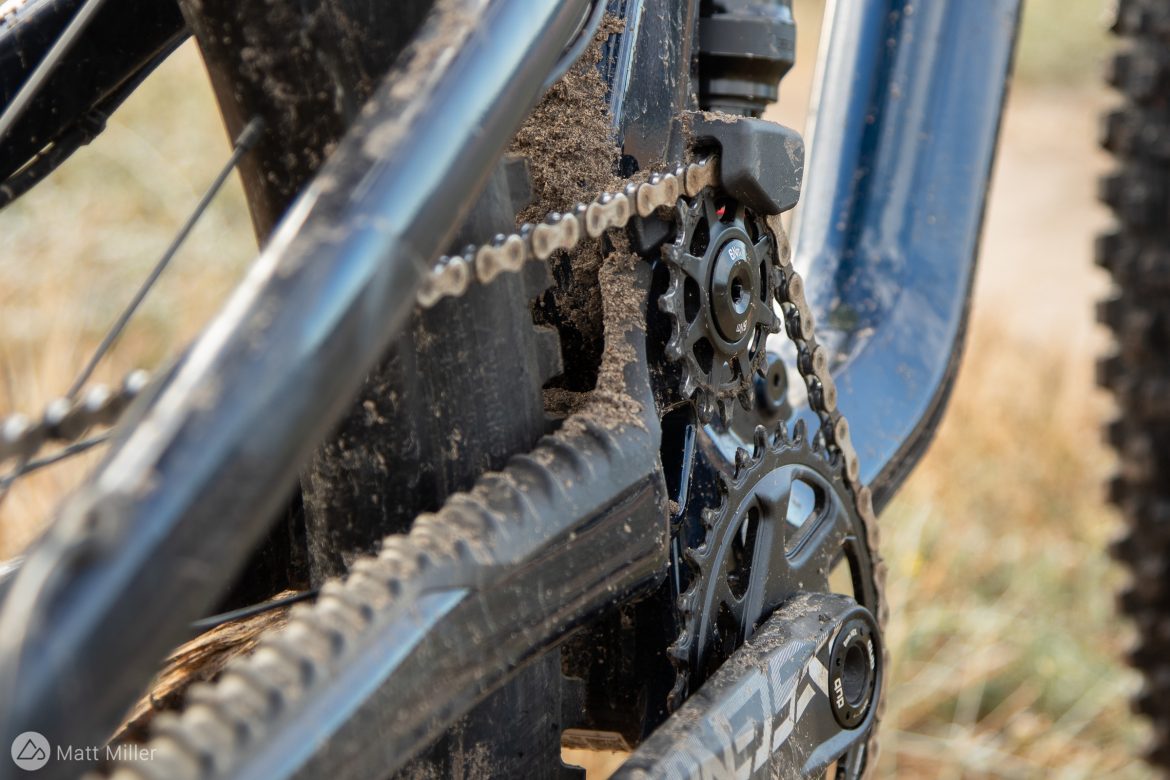
There’s a common remark when people learn about innovations in the bike industry and the successive price increases, especially if someone hasn’t reviewed what the industry offers in some time. I heard it recently from a neighbor’s friend when I was pedaling a review bike around the neighborhood. I’m not sure what shocked him more; the 29-inch wheels or the price tag on this carbon fiber, Shimano XTR-equipped trail bike.
“Ahh, they just keep changing stuff so they can sell more bikes. Soon enough, they’ll be back with 26-inch wheels again.”
I’m skeptical about the latter statement, but he’s not really wrong about the former, although his tone implied that the innovation that happens in any industry is some nefarious scheme so that executives can keep their chalices full of fine wines and charge consumers for useless developments. I realize that this is exactly how some people feel reading this, and that’s OK.
I’ve only been riding for about ten years now, but some of the most profound tech innovations have happened in the last decade: dropper posts, tubeless tires, a revolution in geometry, and suspension refinement. If the “wheel” that the bike industry is always reinventing is actually the bike, then it seems more of a process of perfecting the wheel than a complete overhaul.
While we’ll all probably agree that bikes are better than they were years ago, it does get tiring keeping up with everything. All of us here at Singletracks get a little jaded when repeatedly writing “now with a steeper seat tube angle/slacker head tube angle/longer reach/lighter frame/more tire clearance/better kinematics.” This year, one of the biggest trends was that of the high pivot and idler pulley combination.
Just this year we saw the new Norco Range get one, as did the Devinci Spartan, the GT Force, the Cannondale Jekyll, the Forbidden Dreadnought, and Gerow reviewed the Deviate Highlander. I’m sure I missed a few, but I didn’t intend for this to be an encyclopedia of 2021 high pivot releases. The point is that a whole lot of brands are throwing high pivot/idler pulleys on their trail and enduro bikes lately.
While this suspension layout isn’t new to mountain bikes, it has largely been reserved for downhill bikes. The implementation of the high pivot and idler pulley on single-crown bikes is relatively new. On longer-travel bikes, the advantages of an idler pulley include the reduction or elimination of chain growth that occurs when the suspension is compressed, which would result in pedal kickback/feedback. This can feel like a little gremlin reaching out and grabbing your pedal for a split second as you come off a drop or compression.
The high-pivot equates to a smoother suspension feel over rough trails, and paired with the idler it essentially creates a separation of chain and suspension, as the two don’t always get along together. Single-pivot bikes aren’t generally lauded for their pedaling performance either, and now that high-pivot designs have made their way to trail bikes, you can theoretically have, “the best of both worlds”: a suspension platform made for hard-charging downhills, that when combined with a Horst link or Split Pivot design, makes pedaling performance more tunable.
As GT Bikes product developer John Barreira put it in an interview a few weeks ago, “With a high pivot, we’re able to kind of really fine tune that suspension feel.” Traditionally on single pivot bikes with a high pivot point, there’s less support in the mid-stroke, he explains. A high pivot on a Horst link (or other platform) can be tuned for more support and more anti-squat.
GT sent out their new Force to try this summer, and aside from their idler-equipped Fury I rode a few years ago, which inspired the Force, I hadn’t spent much more time on a high-pivot bike.
Are high pivots a high-necessity? Why you might want one

My first ride on the Force consisted of a steep 2,000-foot climb. There is talk about an increase in drag from the idler pulley, but if it’s there, I couldn’t tell. The Force pedaled uphill as well, if not better than any long travel bike I’ve ridden recently. It weighs a reasonable 34.5lb, and as Barreira mentioned, the suspension has a very supportive and platform-like feel. Pedal bob is minimal and the suspension feels efficient and balanced for traction — pretty similar to any other modern Horst link bike.
As I started descending, I first noticed how seamless the rear wheel felt over the lumpy, brake-bumped trail. On this same trail, not far down, there are fast, three-foot drops, followed by turns, rutted turns, and repetitive drops and roots, thick as water bars. It’s actually a great trail for getting a feel for suspension. The Force’s high-pivot Horst felt notably composed and smooth under compression off of these drops and quieter than a bike that would have more chain growth and slap.
It was a similar story riding it down trails at the bike park this summer. The Force’s design kept me comfortable taking on rougher trails at speed, and the added support keeps the bike agile and poppy. The suspension seemed to work more purely.
Singletracks Tech Editor Gerow mentioned some of the same notions about the high pivot bikes he’s ridden. “Carrying speed on rough trails seems a legit advantage. There appears to be something to the rearward axle path.”
While I felt a big difference in the way the rear end behaved on the Force compared to other bikes, I didn’t feel outright faster on this bike than other 160mm-travel 29ers I have ridden. This could be for a few reasons; the geometry, linear suspension curves that feel equally as planted, or maybe that pedal feedback doesn’t tend to slow me down all that much.
I’m certainly not speaking for everyone, and since I ride clipless it might not be as big of an issue as for someone on flat pedals, but pedal kickback as I’ve experienced it is more of a slight annoyance than a true interference. I’m also a fairly average rider who likes to ride park and rougher trails as much as I like to pedal. So I’m no gravity athlete, but brands don’t produce these bikes solely for their fastest riders. They’re made for you and I alike. In the end, the high pivot seems like a net gain for some bikes, but not by a huge margin.
Keep it simple, suspension: Why you might not want one

There are few reasons why any one of us would rush to sell our bike just to get something newly released because it has a new game-changing feature. I didn’t arrive at the conclusion that a high-pivot made a big difference for myself but GT’s Barreira made a good point that it might be a game-changer for some, when “the back end of your bike is just gonna feel that much more controlled. Like, go hit a rock hard or this big root bed, the bike just has that much more stability.”
Where he pointed out that some may be resistant is when it comes to looks. Amusingly enough, on my first Force ride that I mentioned earlier, two hikers pointed out “the gearing on that bike.”
Gerow also notes the intention and added maintenance of the high pivot and idler. “I wouldn’t recommend it to folks who love to bound around and play a lot on the trail. It’s a race platform. It also adds complexity, so maybe not for riders who don’t want to maintain their bikes.”
In our talk, Barreira pointed out that most people who have spent time in a shop have seen those drivetrains and cassettes that should have been replaced a thousand miles ago. GT has implemented the system on the Force with a steel cog, giving it a longer life than aluminum, and it can be replaced along with the cassette. So maintenance is fairly minimal, but it does create more parts to take care of.
It also seems like high pivots are going to be reserved for longer-travel bikes for a while. The technology is likely more welcomed by riders in this genre, and less necessary on shorter-travel trail bikes where chain growth isn’t as big an issue. Other than the Forbidden Druid and the Deviate Highlander, there aren’t many mid-travel trail bikes with a high-pivot system.
We’ve all got opinions about mountain bike tech and the high pivot is no different. A lot of people have exclaimed their excitement for it especially with so many athletes lately performing well on the suspension platform. We started this with a common sentiment about technology, so why not end on one?
“It’s the rider, not the bike.” This Santa Cruz video – unrelated to high pivots – shows Steve Peat besting himself by 20 seconds against a 15-year-old bike, and it’s a great illustration that riders and bikes develop in tandem and that tech developments do in fact help us ride faster, although the difference probably isn’t as great in a smaller span of time.


















6 Comments
Nov 5, 2021
Otherwise you’re right, the downhill feel of that bike was incredible. I loved it when it was pointed downwards. Just not as much for pedaling the entire trail kinda stuff.
I ended up moving to a pivot switchblade and swear this suspension somehow feels better and pedals more freely and no idler sound. I felt like I was unleashed lol.
Dec 20, 2021
I myself don’t think they have changed fast enough and don’t 100% understand why many advancements haven’t changed faster . Except for folks don’t like change and won’t buy the product if you change it too fast .
If 10-12 years ago you’d have told folks their bikes were going to be bigger and weight more you’d had a flop for bike sales . When the 71deg head tube 73deg seat tube 26” was the norm with short top tubes I just hated them . I sat and drew up a mullet bike with a bike shop owner one day .
He sat and told me a design like like mine just wouldn’t work because the best engineers in the country designed these modern bikes and this is how they work the best . And I now look at how the bike geometry has changed past the bike I designed in the late 1980s .
Tech has incremental changes mostly because if you do change one thing there is a change somewhere else and we have to be able account for this or that .
The high pivot is one I didn’t understand why it went out of favor so so long ago . I thought of it as a great and simple way to control the axle path and it is . It’s a simple design and should have been pursued sooner and hasn’t been . Sometimes the simplest things evade us.
Nov 4, 2021
...Personally attacked
Nov 3, 2021
Nov 4, 2021
Nov 4, 2021